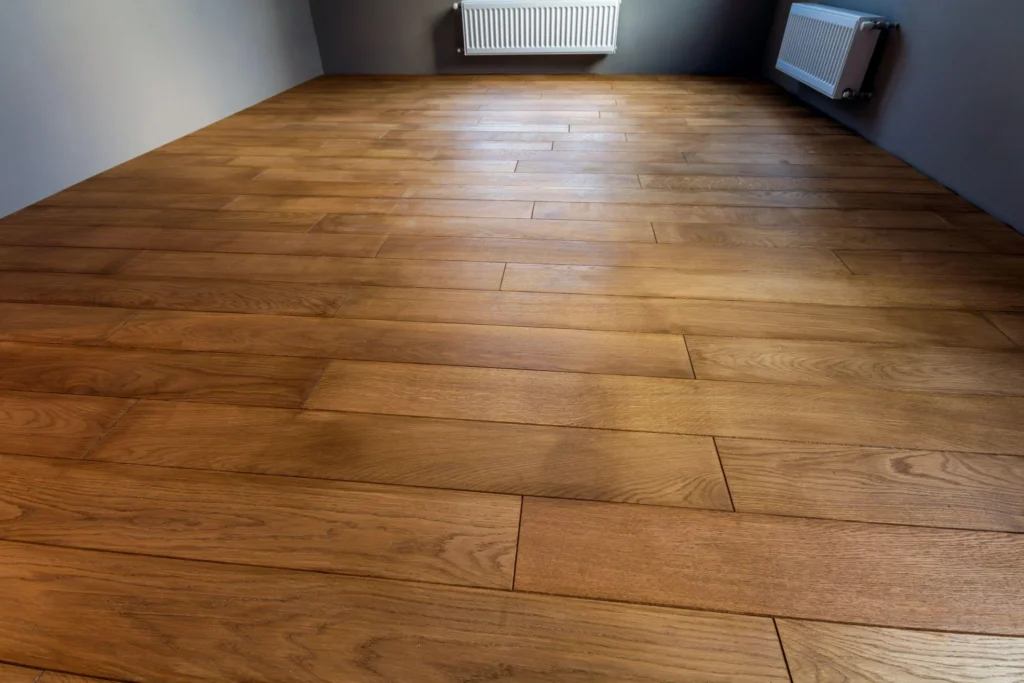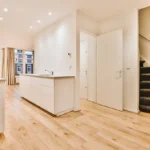Wooden flooring is a classic element in most houses, providing warmth, sophistication, and longevity. As with all natural materials, though, wood has its weaknesses. One of the less publicised yet extremely dangerous problems that can exist within wooden flooring is insect infestation. Small insects like wood-boring beetles, termites, or ants are able to sneak in through cracks and crevices, where they do their work unseen until it is too late. Thankfully at Alpha Floor Sanding we know there is a very good method for minimising this risk in the form of floor gap filling. By filling the tiny gaps between floorboards for Wooden Floors, homeowners can protect their floors and keep insects from moving in under their feet.
Risk of Insects in Wooden Floors
Gaps that occur in wooden floors are not only unpleasant to look at. The tiny openings can also act as a gateway for insects. Wood-boring beetles, for example, breed well in concealed crevices where they can deposit eggs and tunnel into the wood. Termites can use gaps to reach wooden structures, consuming them silently over time. Even ants themselves, which are not wood-borers, will frequently locate gaps and cavities to nest. Pests left unchecked will destroy the structural integrity of the floor, rendering it susceptible to expensive damage.
The issue worsens in older houses where wood has had decades to expand and contract. Natural temperature fluctuations and humidity changes during seasonal variations create tiny gaps in flooring, and these can become ideal conditions for insects to breed. By addressing the issue with gap filling, home owners remove these options and make it a less appealing setting for pests.
Keep your curiosity alive — explore our latest related post today!
How Gap Filling Helps Prevent Infestation
Gap filling is the act of filling gaps in floorboards with specialised substances like resin, wood slivers, or natural wood dust blended with adhesives. The filler hardens upon application and forms a barrier that cannot be easily reached by insects.
The lack of gaps prevents insects from finding the small, dark, and sheltered areas that they need for nesting or egg-laying. It also minimises exposure to the timber itself, with the pests like termites or beetles having a harder time infesting the wood directly. Filling gaps also keeps moisture from accumulating in the crevices. Moist surroundings tend to welcome insects and promote rot, so minimising moisture accumulation is yet another defense tactic against infestations.
A Healthier and Clean Living Space
In addition to pest prevention, gap filling also enhances house hygiene. Gaps without seals are prone to holding dust, crumbs, and debris, not only offering food for pests but also depreciating indoor air quality. By sealing the gaps, you are destroying insect and dirt hiding places.
Homeowners with allergies or asthma tend to experience relief after gap filling, as there are fewer dust particles to collect in the flooring. Your home becomes less inviting to pests with this healthier environment while providing greater comfort to inhabitants.
Keeping the Life of Your Floors Going
Insects can inflict serious damage to wooden flooring. Termites, especially, can burrow inside boards and make them weak and brittle. Beetles, too, can burrow into flooring and create small holes and powdery marks as evidence of the infestation. Fixing such damage typically entails replacing large areas of flooring, which is expensive and inconvenient.
Gap filling is a preventive measure, safeguarding the structural integrity of your flooring before insects ever get a chance to weaken it. By having your wood sealed and less accessible, you are not only enhancing the look of your floors but also their lifespan considerably.
Seasonal Protection for Wooden Floors
Wood tends to swell in summer and shrink in winter as a result of humidity variations. Over time, these seasonal movements tend to create gaps, even in quite new flooring. Although it is a natural phenomenon, it provides a point of entry for insects to infest.
Filling gaps ensures that your floorboards are protected all year round. Professional gap filling materials are elastic enough to tolerate minor seasonal movement without cracking, ensuring the protective seal is maintained with the changing seasons. This ensures gap filling is a long-term and dependable solution for pest-proofing.
Why Professional Gap Filling Is Best
Some homeowners try to seal floor gaps themselves by using store-bought fillers, but these home remedies are rarely permanent. Most basic fillers crumble or shrink over time, reopening the gaps and inviting insects back. Professional floor restoration technicians apply permanent materials that are specifically formulated for wooden flooring. They also clean and prepare the gaps properly, which is what ensures maximum adhesion and durability.
By investing in professional gap filling, you can have confidence that your floors are not only pleasing to the eye but also safe from any chance of infestation. The skills of experts guarantee a finish that is seamless, long-lasting, and effective at deterring pests.
Wooden floors look lovely, but they need some attention and care to remain so. Holes that appear between floorboards do more than ruin the look of your floors—they can also attract pests that create significant and expensive damage. Gap filling is a simple, preventative step that provides a firm barrier against insects while enhancing cleanliness, preventing dust buildup, and prolonging the life of your floors. By closing the tiny crevices where insects would otherwise thrive, you not only safeguard your home but also bask in the peace of mind of knowing your floors are safe, sound, and strong.
Dive into endless inspiration — click to explore more now at Management Works Media!






